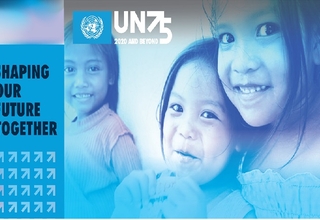The second meeting of the Emergency Committee convened by the WHO Director-General under the International Health Regulations (IHR) (2005) regarding the outbreak of novel coronavirus 2019 in the People’s Republic of China, with exportations to other countries, took place on Thursday, 30 January 2020, from 13:30 to 18:35 Geneva time (CEST). The Committee’s role is to give advice to the Director-General, who makes the final decision on the determination of a Public Health Emergency of International Concern (PHEIC). The Committee also provides public health advice or suggests formal Temporary Recommendations as appropriate.
Proceedings of the meeting
Members and advisors of the Emergency Committee were convened by teleconference
The Director-General welcomed the Committee and thanked them for their support. He turned the meeting over to the Chair, Professor Didier Houssin.
Professor Houssin also welcomed the Committee and gave the floor to the Secretariat.
A representative of the department of compliance, risk management, and ethics briefed the Committee members on their roles and responsibilities.
Committee members were reminded of their duty of confidentiality and their responsibility to disclose personal, financial, or professional connections that might be seen to constitute a conflict of interest. Each member who was present was surveyed and no conflicts of interest were judged to be relevant to the meeting. There were no changes since the previous meeting.
The Chair then reviewed the agenda for the meeting and introduced the presenters.
Representatives of the Ministry of Health of the People’s Republic of China reported on the current situation and the public health measures being taken. There are now 7711 confirmed and 12167 suspected cases throughout the country. Of the confirmed cases, 1370 are severe and 170 people have died. 124 people have recovered and been discharged from hospital.
The WHO Secretariat provided an overview of the situation in other countries. There are now 83 cases in 18 countries. Of these, only 7 had no history of travel in China. There has been human-to-human transmission in 3 countries outside China. One of these cases is severe and there have been no deaths.
At its first meeting, the Committee expressed divergent views on whether this event constitutes a PHEIC or not. At that time, the advice was that the event did not constitute a PHEIC, but theCommittee members agreed on the urgency of the situation and suggested that the Committee should continue its meeting on the next day, when it reached the same conclusion.
This second meeting takes place in view of significant increases in numbers of cases and additional countries reporting confirmed cases.
Conclusions and advice
The Committee welcomed the leadership and political commitment of the very highest levels of Chinese government, their commitment to transparency, and the efforts made to investigate and contain the current outbreak. China quickly identified the virus and shared its sequence, so that other countries could diagnose it quickly and protect themselves, which has resulted in the rapid development of diagnostic tools.
The very strong measures the country has taken include daily contact with WHO and comprehensive multi-sectoral approaches to prevent further spread. It has also taken public health measures in other cities and provinces; is conducting studies on the severity and transmissibility of the virus, and sharing data and biological material. The country has also agreed to work with other countries who need their support. The measures China has taken are good not only for that country but also for the rest of the world.
The Committee acknowledged the leading role of WHO and its partners.
The Committee also acknowledged that there are still many unknowns, cases have now been reported in five WHO regions in one month, and human-to-human transmission has occurred outside Wuhan and outside China.
The Committee believes that it is still possible to interrupt virus spread, provided that countries put in place strong measures to detect disease early, isolate and treat cases, trace contacts, and promote social distancing measures commensurate with the risk. It is important to note that as the situation continues to evolve, so will the strategic goals and measures to prevent and reduce spread of the infection. The Committee agreed that the outbreak now meets the criteria for a Public Health Emergency of International Concern and proposed the following advice to be issued as Temporary Recommendations.
The Committee emphasized that the declaration of a PHEIC should be seen in the spirit of support and appreciation for China, its people, and the actions China has taken on the frontlines of this outbreak, with transparency, and, it is to be hoped, with success. In line with the need for global solidarity, the Committee felt that a global coordinated effort is needed to enhance preparedness in other regions of the world that may need additional support for that.
For more information, please visit: https://www.who.int/news-room/detail/30-01-2020-statement-on-the-second-meeting-of-the-international-health-regulations-(2005)-emergency-committee-regarding-the-outbreak-of-novel-coronavirus-(2019-ncov)



